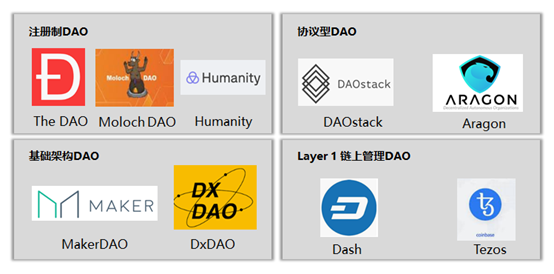China Europe Business School Gong Yue: DAO and Alliance Chain, a dispute that began with Hayek and Keynes
Text: Gong Yan, Professor, CEIBS
Source: Tsinghua Financial Review
Editor's note: The original title was "Gong Yue: DAO and the Alliance Chain: A Controversy Beginning with Hayek and Keynes | Internet Finance"
Hayek, a determined defender of the free market, is known for his first confrontation with "macroeconomics" against Keynes in the 1930s. It was also the controversy of the victory of Keynesianism that Hayek ushered in a quiet period of nearly 40 years. However, the high inflation of the 1970s made people aware of the limitations of Keynes's prescription. In 1974, Hayek unexpectedly became the winner of the Nobel Prize in Economics that year, marking the "take-off" of liberalism.
- Vitalik's latest thinking: what kind of subversive effect the second party payment will bring
- Nobel laureate Tirole: Humanity is facing a new round of currency war, this round of war is likely to include cryptocurrencies
- Weekly Bitcoin Positions Report | Many types of accounts show a bearish attitude and further callback danger signals appear?
Coincidentally, one night in 1998, David wrote the opening words in a txt file called bmoney: I was deeply attracted by the digital world depicted by Tim May. This phrase, which was read as "unintelligible" at that time, was gradually understood by people until the publication of a Bitcoin white paper written by Mr. Satoshi Nakamoto in 2008. More importantly, this white paper opened the era of the blockchain era, and a peer-to-peer network also made people aware of the possibility of decentralization. Because of this, the wind of missing Hayek prevails again. Thanks to blockchain technology, Daniel Larimer first proposed the concept of "autonomous organization company" in 2013. Similarly, following the blockchain 2.0, discussions about the future of the alliance chain have never stopped. People cannot help asking: What difficulties did DAO encounter from 2013 to now? What is the status quo of DAO and Alliance Chain in the Chinese market?
What is DAO?
DAO refers to an organization that encodes regulations based on computer programs. Among them, computer programs are open and transparent, and do not take orders from any centralized mechanism. In DAO, transaction records and transaction verification are achieved through blockchain technology, and each organization member can participate in voting in decision-making. In addition, DAO does not adopt a top-down management model, but provides a point-to-point operating platform for each member.
The Bitcoin blockchain can be considered the first quasi-DAO. Each miner receives a reward by generating a block, and each node verifies a newly generated block. All transactions are recorded on the blockchain and are non-tamperable. There is no one center in the entire Bitcoin ecosystem, and all nodes are linked through the consensus mechanism of proof of work.
What really allows DAO to flourish is Ethereum. As an open source, distributed platform based on blockchain technology, Ethereum is the largest public chain today. Therefore, DAO organizations can build decentralized applications through Ethereum, and encode the rules of the organization on the blockchain in the form of smart contracts to achieve distributed autonomous management.
Although de DAO has caused discussion among many scholars due to its decentralized concept and smart contract technology, the autonomous organization itself is not new, and the way most people vote is also traceable in history, and it can be traced back to Rome in the early days. Republic period. Therefore, this article will explore the shortcomings of DAO from the organizational and technical levels.

Figure 1: Four DAOs built on Ethereum
Source: Darwin Think Tank
Incorrect decision-making: side effects of referendum
From the perspective of the fundamentalists of DAO, one of the biggest problems existing in organizations today is centralization, which means that decision-making is only for a small number of people, and most people's opinions do not get feedback. Therefore, a DAO that allows every member to participate in voting can better integrate all opinions and be superior to a centralized organization.
There is a big misunderstanding in this view: the participation of the entire population or the vast majority of people will make a decision more correct. Regarding the characteristics of the group, French social psychologist Le Pen wrote in his masterpiece "Wu He Zhong": When an individual is an isolated individual, he has his own distinct personal characteristics, and when he is integrated into the group, his thinking Will be immediately replaced by the community. Therefore, emotional, non-objection and low IQ are three typical characteristics of a group. Therefore, national decision-making is not the same as correct decision, which is also evident from the famous prohibition in American history.
In the 1910s, American women launched a women's movement because of domestic violence after their husbands became drunk. They demanded that a prohibition be issued to protect women's rights. This initiative quickly gained the support of Christian Protestants, because alcohol is religiously sinful and one should abstain from ascetic practice. In addition, public opinion has long advocated a ban on alcohol. Therefore, in this context, the "Wolster Act", which banned the production and sale of alcohol, came into effect in 1920. However, the ban on alcohol drove the entire United States into chaos for more than a decade. Constraints on the supply side have led to an increase in the price of drinks, and the consumption of drinks is habitual. The end result is that people who drink have to spend more money on the underground black market for alcohol consumption, and return home to their wives after consumption Conduct more serious domestic violence. In addition, the prohibition on alcohol has also led to the gangsters of the underworld, and some collusion between government and business has occurred frequently. In the end, this infamous prohibition was officially "deathed" in 1933.
In addition, the participation of most people in decision-making can easily lead to the rise of populism and the phenomenon of group invasion of themselves. Therefore, the referendum advocated by DAO does not mean correct decision.
Inefficiency: the result of a trade-off between decentralization and scalability
Another problem with majority voting is efficiency. Because of this, majority voting is historically suitable for a small country and a dwarfed system. In addition, decentralization, scalability, and security issues are the ternary paradoxes faced by current blockchain technologies. Emphasizing decentralization means sacrificing scalability.
In addition, from a practical point of view, the passage of a bill in representative countries in Europe takes a long time, and the top-down model often has strong enforcement power. This can be confirmed from the development of our country for more than 40 years: the success of reform and opening up is not only related to the foresight of the chief designer, but also inseparable from the firm implementation of this policy. "Orange is born in Huainan for tangerine, and Huaibei is born in pupa." The same policy is placed in any Western government, and the effect must be slow and discounted. Therefore, compared with traditional companies, decentralized autonomous organizations have a great disadvantage in terms of efficiency. It is precisely for this reason that DAO organizations do not have a market in China or are localized and have Chinese characteristics.
Security Issues: "Death Before You Start" The DAO
From a technical point of view, a major feature of DAO's reputation is that the rules cannot be tampered with. As mentioned earlier, DAO encodes the organization's rules and regulations on the blockchain in the form of smart contracts, and smart contracts are non-tamperable, and once conditions trigger, they will be executed without compromise. It is true that smart contracts are innovative and economical compared to traditional contracts, but the premise of immutability should be based on a correct and secure contract. If the entire system has vulnerabilities, when the system is under network attack, immutability will cause great obstacles to the repair of the vulnerability.
The DAO has left a strong mark in the development history of the DAO organization. Founded at the end of April 2016, the crowdfunding fund exceeded 16 million US dollars in 16 days, attracting more than 11,000 investors—The digital autonomous organization TheDAO had the best start in DAO history at the time. To provide a new decentralized business model for business and non-profit enterprises-the philosophy advocated by The DAO also fits well with the DAO organization itself. All signs seem to indicate that The DAO has unlimited prospects.
However, just in May 2016, a paper on a series of security risks of The DAO was published online. Then, an Ethereum developer pointed out a critical vulnerability in The DAO system after more than ten days. Subsequently, the vulnerability modification was formally proposed within The DAO organization in the form of a proposal and awaiting approval by its members. As mentioned in the previous section, because of the inefficiency of majority voting, the proposal for this critical bug fix has also been "unresolved."
On June 17, 2016, The DAO was subjected to a series of cyber attacks, including the critical vulnerability. Due to the immutability of smart contracts, the repair of vulnerabilities will become extremely difficult and difficult to complete within a short time. Therefore, nearly 50 million US dollars of funds in The DAO organization were transferred by hackers in a short period of time. In order to recover the losses, Ethereum adopted a controversial hard fork at the time, transferring the stolen funds to another repaired address.
In September and December 2016, Poloniex and Kraken two trading platforms have successively delisted The DAO's token. "Before you die, you die first"-this is probably the true portrayal of The DAO, which was once glorious.
China market: alliance chain has great potential
The alliance chain has great potential in the Chinese market because it takes into account the weak centralization of the public chain and the efficiency of the private chain, as well as being friendly to supervision. From the perspective of e-government, China's current blockchain e-government applications mostly adopt the alliance chain method, which operates in a business decentralized + management centralized manner. At the same time, due to its good credit endorsement, the alliance chain formed by large institutions can better integrate resources and achieve a synergy effect of 1 + 1> 2. Therefore, compared with the decentralized autonomous organization, the multi-centralized model of the alliance chain is theoretically more in line with China's national conditions.
However, the alliance chain also has the possibility of "mutation" in its future development. Microeconomics divides markets into four categories: perfect competition, monopolistic competition, oligarchs, and monopolies. Among them, monopoly refers to a market in which there is only a single supplier and there are no substitutes. The original intention of the alliance chain is to build a multi-centralized model and better integrate resources on the industrial chain. Although polycentricity is different from decentralization, at least polycentricity does not represent a single-centric model. However, many cases based on the Delegated Proof-of-Stake (DPOS) mechanism have shown that this model of supernodes is likely to lead to a situation of "bigger Hengda". In fact, the alliance chain also has a similar situation: if the alliance chain is composed of giants from each industry on an industrial chain, the ideal polycentricity will essentially evolve into a larger central body, which will eventually cause A monopoly in the industry chain will further reduce consumer surplus.
The battle between decentralization and polycentricity
In fact, as early as 10 years before Mr. Satoshi Nakamoto published the white paper, Bitcoin and its predecessor bmoney creators David and Tim May and others explored a crypto-anarchic community. Due to historical limitations and other reasons, such a community could only belong to an "ideal country" at the time, as David wrote in that txt file named bmoney: Until now (Note: 1998), even from theory In terms of how such a community works, it is not clear.
Today, 11 years after Mr. Satoshi Nakamoto released the white paper, the emergence of the DAO organization has also made such a digital world community a reality. However, for many reasons, the application of decentralized autonomous organizations is currently quite limited. In contrast, the multi-centralized alliance chain is more recognized by most people.
To some extent, the debate between decentralization and polycentricity is somewhat similar to that of Hayek and Keynes. The DAO organization advocates subverting the traditional top-down model, while the alliance chain is more inclined to multi-centralize the integration of resources on the industrial chain. Similarly, Hayek advocated liberalism and let the invisible hand dominate the economy; in this way, in Keynes's view, there was only one result: We are all dead.
Back to the present, although many scholars have discussed decentralization and polycentricity several times, no consensus has yet been reached. In fact, this result is expected: looking to the future is a difficult matter in itself. It should be known that as early as the 1950s, economic master Samuelson was optimistic about the planned economic model adopted by the former Soviet Union, and constantly based on data analysis to determine when the former Soviet Union economy surpassed the United States. Regrettably, until the collapse of the Soviet Union, Mr. Samuelson's projections never materialized. But even so, regarding decentralization and multi-centralization, or the future of DAO and the alliance chain, we still have reasons to believe that the market will make reasonable choices for us.
We will continue to update Blocking; if you have any questions or suggestions, please contact us!
Was this article helpful?
93 out of 132 found this helpful
Related articles
- Featured | Five-Minute Quick Tour of the 10-year History of the Blockchain; Ethereum 2.0 Information Collection
- Trojan attacks, 5,000 computers reduced to mining "black labor"
- Big Brothers Call | Chain Node's 2nd Anniversary Special Show Talks Tonight
- Babbitt weekly election 丨 Beijing takes the lead in piloting the "fintech supervision sandbox"; Europe and the United States appear to have divergent views on central bank digital currencies
- Bank of China releases 2020 Economic and Financial Outlook Report: Blockchain empowers the banking industry in all directions
- Guo Yuhang: Call on the country to pilot a special tax for bitcoin mining, and to nurture the development of blockchain technology
- Babbitt Column | Is Quantitative Trading in the Blockchain Really Reliable?






